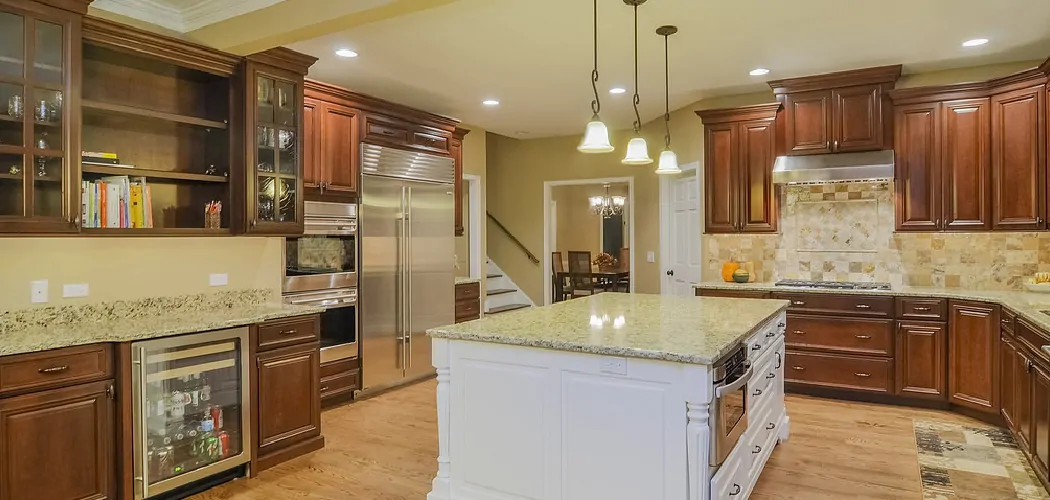Updating old kitchen lighting can completely transform the look and feel of your kitchen. A well-lit kitchen makes it easier to cook and creates a warm and inviting atmosphere for family and friends to gather. However, many homeowners only update their kitchen lighting if they think it will be too complicated or expensive.
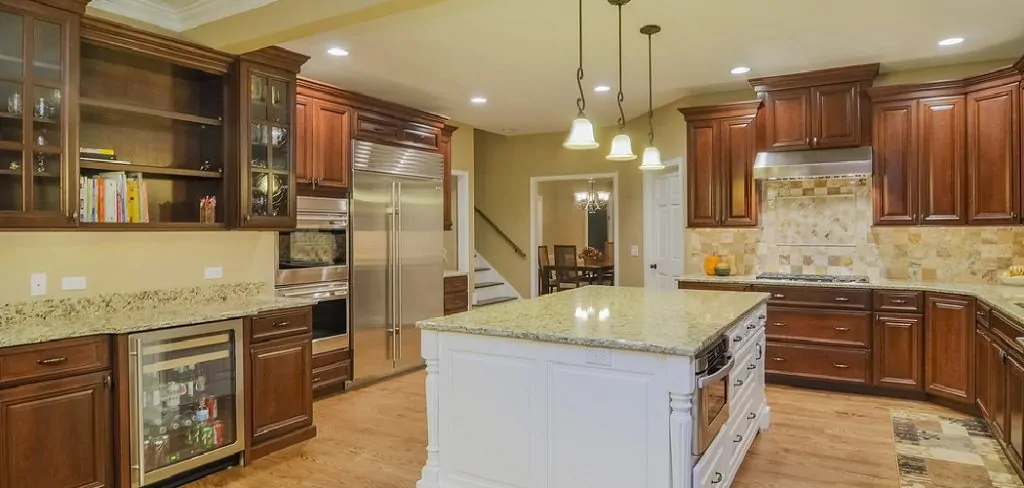
In reality, there are simple and affordable ways to update old kitchen lighting that can have a big impact. In this guide, we will discuss the different types of kitchen lighting and provide step-by-step instructions on how to update old kitchen lighting and bring new life to your space.
Understanding Different Types of Kitchen Lighting
Before diving into the steps for updating old kitchen lighting, it’s important to understand the different types of lighting commonly used in kitchens. This will help you determine which type of lighting is best suited for your needs and how to properly update it. The three main types of kitchen lighting are ambient, task, and accent.
1. Ambient Lighting – Also known as general lighting, this type of lighting provides overall illumination for the entire space. It is typically achieved through overhead fixtures such as flush mounts or semi-flush mounts. Ambient lighting should be bright enough to light up the entire room without creating harsh shadows.
2. Task Lighting – As the name suggests, task lighting provides focused illumination for specific tasks such as chopping vegetables or reading recipes. This type of lighting is typically found in the form of under-cabinet lights, pendant lights over kitchen islands, or track lighting above countertops.
3. Accent Lighting – Used to highlight specific features or areas in the kitchen, accent lighting adds depth and dimension to the space. This can be achieved through spotlights, wall sconces, or recessed lighting.
Tools and Materials You Will Need to Update Old Kitchen Lighting
- Ladder or step stool
- Screwdriver
- Wire cutters/strippers
- Electrical tester
- Replacement bulbs (if needed)
- New light fixtures or parts (if needed)
- Wire connectors
- Electrical tape
- Safety goggles and gloves (optional but recommended)
Step-by-step Guidelines on How to Update Old Kitchen Lighting
Step 1: Plan Your Lighting Layout
The first step in updating old kitchen lighting is to plan your lighting layout. This involves determining the type of lighting you need for each area of your kitchen and where you want to place the fixtures.
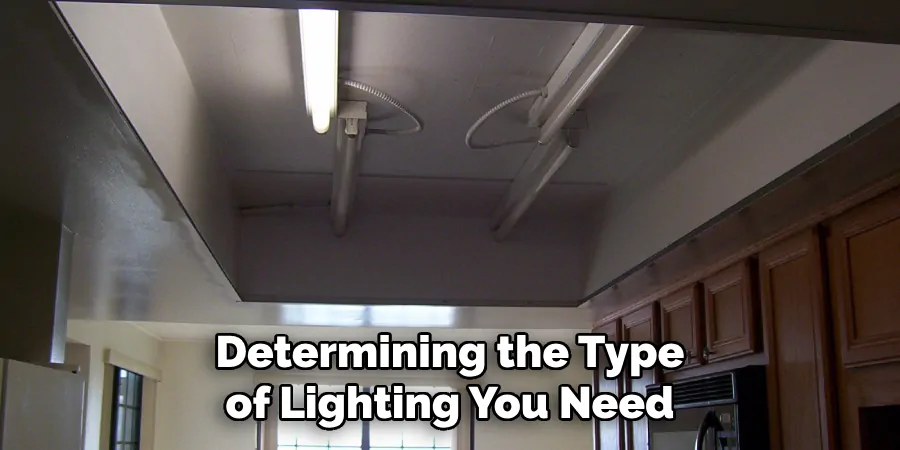
Consider how much natural light enters your kitchen, what activities take place in each area, and any specific features or objects you want to highlight with accent lighting. This will help you create a balanced and functional lighting scheme.
Step 2: Turn Off Power to the Kitchen Lighting
Before starting any electrical work, it is important to turn off the power in the kitchen lighting. This can be done by flipping the corresponding breaker in your electrical panel or turning off the light switch.
Use an electrical tester to ensure that no power is flowing to the fixtures, and always follow safety precautions when working with electricity. If you are unsure, it is best to hire a licensed electrician.
Step 3: Remove Old Light Fixtures
Remove the old light fixtures from the ceiling or wall using a screwdriver. If you are updating recessed lighting, carefully remove the trim and bulb before unscrewing the housing from the ceiling.
Disconnect any wires by using wire cutters/strippers to remove the wire connectors and untwisting the wires. Remember to keep track of which wires are connected to ensure proper installation of the new fixtures.
Step 4: Install New Light Fixtures
Follow the manufacturer’s instructions to install your new light fixtures in the designated locations. This may involve attaching mounting brackets or wiring the fixture itself. Use wire connectors and electrical tape to secure and cover any exposed wires.
Remember to turn off the power at the electrical panel before making any connections. While installing the fixtures, make sure they are level and securely attached to avoid any accidents.
Step 5: Test and Adjust Lighting
Once all fixtures are installed, turn the power back on and test each light individually. Make sure they are functioning properly and adjust their position if needed. You can also install dimmer switches to further customize the lighting in your kitchen.
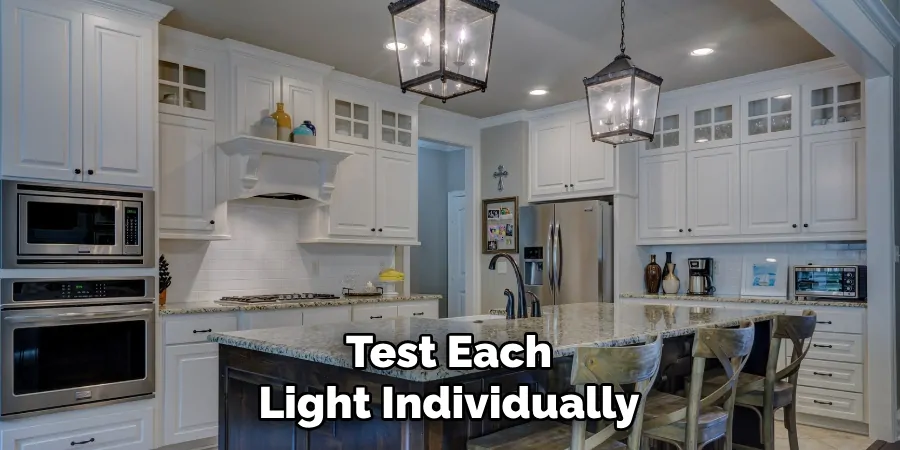
If any issues arise, consult the manufacturer’s instructions or contact a licensed electrician for assistance. This is also a good time to clean any light fixtures and replace bulbs if needed.
Following these steps will help you successfully update your old kitchen lighting and create a brighter, more functional space. Remember to always prioritize safety when working with electricity and consult a professional if needed. With the right tools and materials, updating old kitchen lighting can be an easy and affordable DIY project that will make a big difference in your home.
So don’t hesitate to give it a try and transform your kitchen into a well-lit and inviting space for all to enjoy. So, keep old lighting from creating the kitchen of your dreams. Get started today and see the difference it makes! Happy updating!
Additional Tips and Tricks to Update Old Kitchen Lighting
1. If you have a hanging light fixture above your kitchen island or dining table, consider replacing it with a pendant light. This will not only update the look of your kitchen but also provide more focused lighting for meal prep and dining.
2. Adding under-cabinet lighting is another easy way to update old kitchen lighting. These lights can be installed underneath cabinets and provide extra task lighting for cooking and food preparation.
3. If you have recessed lighting in your kitchen, consider replacing the old bulbs with LED lights. LED lights are more energy efficient and can last much longer than traditional incandescent or fluorescent bulbs.
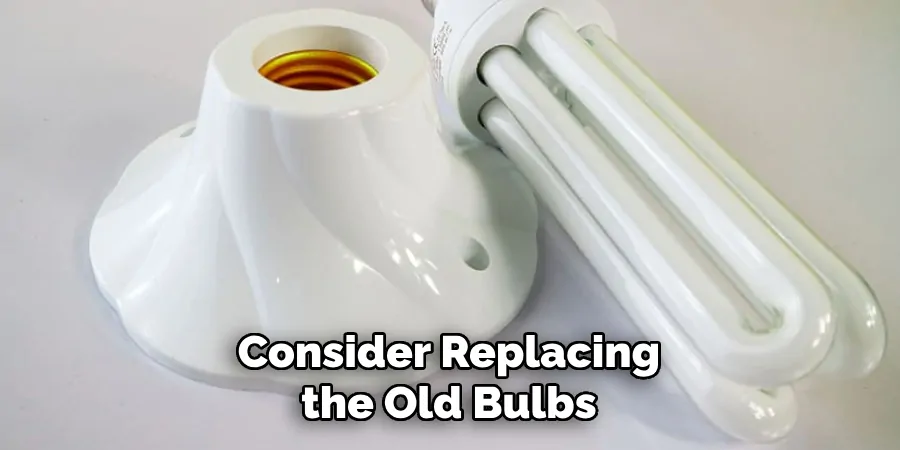
4. Remember to mix and match different types of lighting fixtures in your kitchen. Combining pendant lights over the island with recessed lighting in the ceiling can create a more dynamic and functional lighting scheme.
5. Consider adding dimmer switches to your existing kitchen lights. This will allow you to control the brightness of the lights and create different moods in your kitchen, from bright and energizing to soft and cozy.
6. If you have a small kitchen with limited natural light, consider adding a skylight or solar tube to bring in more natural light. This can also help reduce the need for artificial lighting during the day.
7. Think about adding a statement piece like a chandelier or unique pendant lights to add character and personality to your kitchen. Just make sure these fixtures are installed at the appropriate height and don’t obstruct any pathways.
8. Consider installing motion-sensor lights in your kitchen for added convenience and energy efficiency. These lights will automatically turn on when you enter the room and turn off when there is no movement, saving you both time and money.
9. If your kitchen has open shelving or glass cabinets, consider adding LED strip lighting to showcase your dishes and add a touch of ambiance.
Following these additional tips and tricks will not only update the lighting in your kitchen but also make it more functional and enjoyable to use. Feel free to get creative and mix different types of lighting for a personalized and unique look.
And remember, always prioritize energy efficiency when choosing new lighting fixtures or bulbs. Happy updating!
Things You Should Consider to Update Old Kitchen Lighting
1. The first thing you should consider when updating old kitchen lighting is the type of lighting you want to use. Various types of lighting are available, including ambient, task, and accent lighting. Each type serves a different purpose and can greatly impact your kitchen’s overall look and feel.
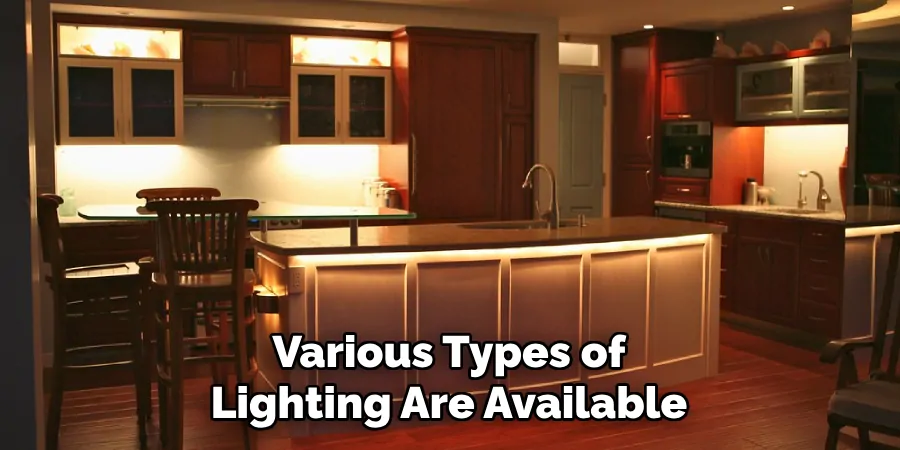
2. Another important factor to consider is the placement of your lighting. You want to make sure that the lights are strategically placed to provide optimal lighting for cooking, cleaning, and other kitchen activities. This may involve adding additional fixtures or rearranging existing ones.
3. The brightness and color temperature of your lighting should also be taken into consideration. Brighter lights are essential for task areas, such as over the stove or sink, while warmer lights can create a more inviting and cozy atmosphere.
4. It is also important to consider the energy efficiency of your lighting choices. LED lights are a great option as they consume less energy and have a longer lifespan compared to traditional incandescent bulbs.
5. In addition to updating the fixtures, consider installing dimmer switches for added versatility in controlling the intensity of your kitchen lighting.
6. Remember the style and design of your lighting. It should complement the overall aesthetic of your kitchen and tie in with other design elements such as cabinet hardware, countertops, and backsplash.
7. If your kitchen has outdated fluorescent lighting, consider replacing it with more modern options like recessed lighting or pendant lights. This can instantly update the look of your kitchen and make it more visually appealing.
8. Consider incorporating under-cabinet lighting to provide additional task lighting for food preparation areas or to highlight decorative items on your countertops.
9. When choosing lighting fixtures, consider the functionality of your kitchen. Pendant lights may look beautiful over a kitchen island, but they could obstruct movement around the space if they are too low.
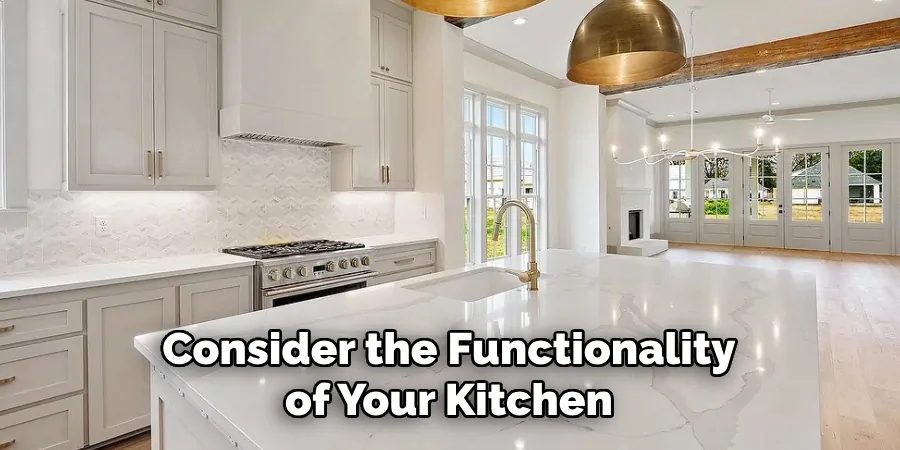
Following these considerations will help you update your old kitchen lighting in a way that enhances your space’s functionality and aesthetics. Take your time to research and choose the right lighting options for your needs, budget, and personal style.
With the right lighting, you can transform your kitchen into a well-lit, inviting, and functional space for all your cooking and entertaining needs.
So don’t hesitate to explore different options and get creative with your lighting choices! So go ahead and start updating your old kitchen lighting today for a brighter, more beautiful kitchen tomorrow. Happy decorating!
Troubleshooting Common Issues to Update Old Kitchen Lighting
1. Flickering Lights:
If you notice that your kitchen lights are flickering, there could be a few different reasons for this issue. The first thing to check is the light bulbs themselves. Make sure they are securely screwed in and not loose. If they are loose, tighten them and see if the flickering stops.
If tightening the bulbs doesn’t solve the problem, it could be due to a faulty fixture or wiring issue. In this case, calling a licensed electrician for help is best. Another possible cause of flickering lights could be the dimmer switch. If your kitchen lights are on a dimmer switch, try adjusting them or replacing them altogether. Dimmer switches can wear out over time and may need to be replaced.
2. Uneven Lighting:
If you notice that your kitchen lighting is uneven, with some areas being brighter than others, this could be due to a few different reasons. One common cause is the placement of the light fixtures. Make sure they are evenly spaced and not too far apart or too close together.
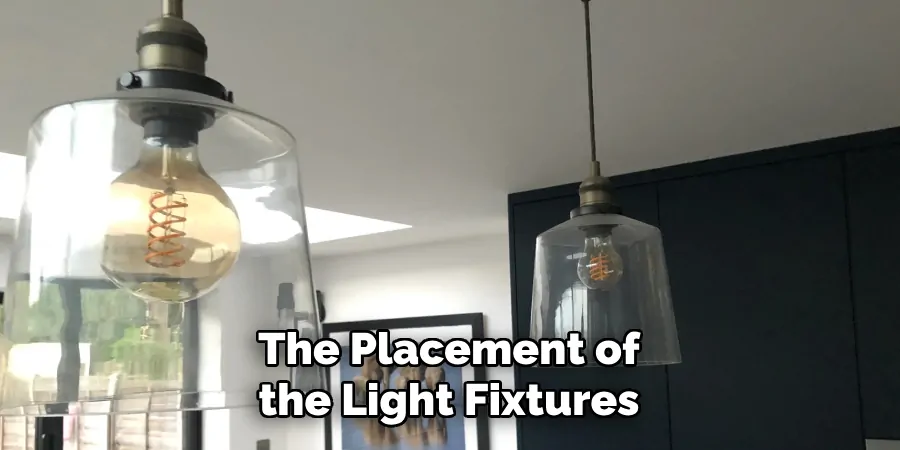
Another possible cause is outdated light bulbs. If you have a mix of old and new bulbs, this can create uneven lighting. Try replacing all of the bulbs with newer, energy-efficient ones to see if that solves the issue. If neither of these solutions works, it could be due to a faulty fixture or wiring issue. In this case, calling a licensed electrician for assistance is best.
3. Hot Light Fixtures:
It’s normal for light fixtures to get warm when in use, but if you notice that your kitchen light fixtures are hot to the touch, this could be a sign of a bigger issue. The first thing to check is the wattage of the bulbs you are using. Make sure they are manageable for the fixture. Using bulbs with a higher wattage than recommended can cause the fixture to overheat.
Another possible cause is the fixture’s location. If it is too close to insulation or other materials, it can overheat. Make sure there is enough space around the fixture for proper ventilation.
Also, check for any loose or damaged wiring that could be causing the issue. If you are not comfortable checking these things yourself, it’s best to call a licensed electrician for help.
4. Buzzing or Humming Sounds:
Buzzing or humming sounds coming from your kitchen lighting can be annoying and may indicate a problem. One possible cause of this issue is the type of bulbs being used. Some cheaper bulbs can produce a buzzing sound when in use. Consider replacing them with higher-quality bulbs to see if the noise stops.
Another cause could be loose bulbs or a loose fixture. Make sure everything is securely screwed in, and tighten any loose parts. If the buzzing or humming persists, the wiring may have an issue. In this case, calling a licensed electrician for assistance is best.
5. Lights Not Turning On:
If your kitchen lights refuse to turn on, there could be a few different reasons for this issue. The first thing to check is the light switch. Make sure it is turned on and functioning properly. If you have a dimmer switch, make sure it is set to the correct setting.
If the switch seems fine, the next step would be to check the circuit breaker or fuse box. There may have been a power surge that caused the breaker to trip or the fuse to blow. If this is the case, reset the breaker or replace the blown fuse.
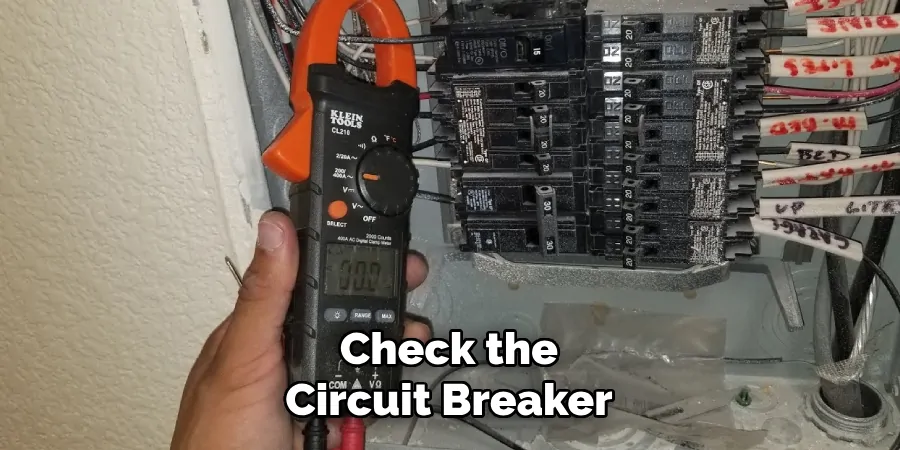
If these solutions do not work, there could be a deeper issue with the wiring or fixture itself. In this case, calling a licensed electrician for assistance is best. Trying to fix electrical issues on your own can be dangerous and is not recommended.
Following these troubleshooting tips can help you update your old kitchen lighting and keep it functioning properly. If the issues persist, don’t hesitate to call a professional for assistance. It’s always better to be safe than sorry when dealing with electrical issues. With the right knowledge and assistance, you can have updated and efficient kitchen lighting in no time!
Frequently Asked Questions
What Types of Lighting Fixtures Should I Consider When Updating My Kitchen?
Depending on your needs and preferences, you can consider various types of lighting fixtures. Some popular options include chandeliers, pendant lights, recessed lighting, track lighting, and under-cabinet lighting. It is important to choose fixtures that provide adequate light for your kitchen and complement the overall design aesthetic.
How Do I Determine the Right Size of Lighting Fixtures for My Kitchen?
When selecting lighting fixtures for your kitchen, size is an important factor to consider. A general rule of thumb is to choose fixtures that are approximately one-third the size of your kitchen island or dining table. For example, if your kitchen island is 6 feet long, then a light fixture that is 2 feet in diameter would be suitable.
What Types of Bulbs Should I Use in My Kitchen Lighting Fixtures?
The type of bulb you use can make a big difference in the quality of light in your kitchen. LED bulbs are a popular choice for their energy efficiency and longevity, while halogen bulbs provide bright, white light. Choosing the right color temperature for your bulbs is important – warmer tones (2700K-3000K) are ideal for creating a cozy atmosphere, while cooler tones (3500K-5000K) are better for task lighting.
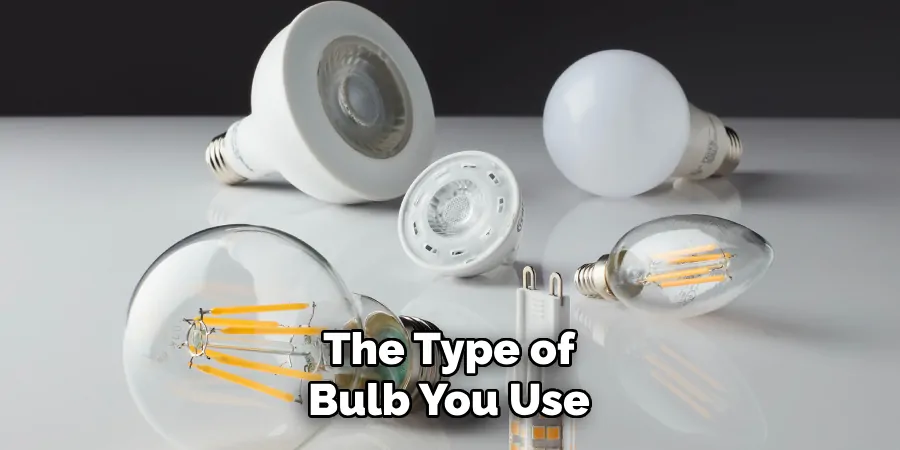
How Can I Incorporate Dimmer Switches into My Kitchen Lighting Design?
Dimmer switches are a great way to control the brightness of your kitchen lighting and create different moods depending on the time of day or occasion. They can be incorporated into most types of lighting fixtures, including chandeliers, pendant lights, and recessed lighting. Ensure that your dimmer switch is compatible with the type of bulb you are using for optimal functionality.
What are Some Creative Ways to Use Lighting in My Kitchen?
Aside from traditional overhead lighting, there are many creative ways to add light to your kitchen. You can install under-cabinet lighting for better task illumination, use track lighting to highlight specific areas or objects, and even incorporate lighting into your kitchen shelves or cabinets for a unique look.
Consider using different types of fixtures to create layers of light that add depth and interest to your kitchen design.
Conclusion
Now you know how to update old kitchen lighting and the various considerations to keep in mind when choosing lighting fixtures. Remember to consider your needs, preferences, and the overall design aesthetic of your kitchen before making any changes.
With the right lighting, you can transform your kitchen into a bright and inviting space for cooking, entertaining, and spending time with loved ones. Feel free to get creative and have fun with different types of lighting to create a unique and personalized look in your kitchen. Happy updating!

